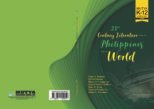Practical Approach to Information Communication Technology (ICT)
Authors: Elika S. Farshid Mehr, Frederic D. Yulo
About Information Communication Technology (ICT)
Technology as we understand it today began its predominant presence in people’s daily life more than 20 years ago. But the need to know it more closely and utilize it out of necessity did not exist until the birth of the new millennia. Today’s success in education, business, administration, government, and military aspect is vitally dependent to technology. However, what makes technology so important is not technology itself or the common attributes that are given to it, such as convenience, reduced costs, ease of access and etc. but what gives notion and meaning to it—that is Information. Information since the dawn of history has been a vital source of man’s survival and success. Today’s success, however, does not only depend on much information one has but how fast he/ she can access, exploit, create and communicate it. This is where technology and information unit work to people’s advantage and make it so important to learn how they work and how they move each day’s activities to the next.
The Idea of Writing this book
The notion of creating this book developed about a year ago. The primary objective was to provide a simplified and inexpensive way of learning ICT for students and learners in the Philippines. As educators in higher education level we were able to observe students’ limitations and lack of eagerness in purchasing prescribed textbooks mainly due to lack of funds. Therefore we came up with the idea of creating a concise, practical, and inexpensive book which would contain essential knowledge that everyone has to know about technology. With our family, friends, and colleagues encouragements we were motivated to set the plans into motion and began drafting the very first chapters. And after a year of debating and adding and removing chapters and sections we have finally come to offer the compilation of all things we found, wrote and found useful to the reader. This book has been made for anyone specially those who have little means to purchase gadgets or computers or learn IT closely.
The readers are encouraged to send their valuable feedbacks to fredericyulo@ yahoo.com. Suggestions for the improvement of the text are also welcome.




